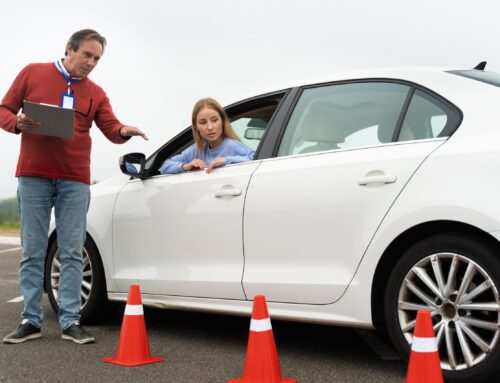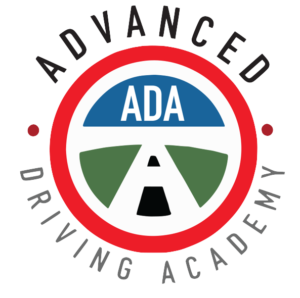As the golden years approach, the open road beckons with both freedom and challenges. The importance of defensive driving for seniors cannot be overstated; it becomes a critical skill that ensures safety amidst the bustling traffic and unpredictable conditions. With the inexorable march of time comes a natural diminishment in reaction times, making the mastery of anticipatory and safe driving techniques not just beneficial, but essential. Through the lens of defensive driving, the road transforms from a potential hazard to a landscape navigated with confidence and care.
The cultivation of defensive driving habits serves as a beacon, guiding older drivers through the complexities of modern traffic with a steady hand. It is not merely about avoiding accidents, but about creating a buffer of safety—a proactive approach to driving that acknowledges the evolving challenges of aging. The commitment to such practices promises not only the preservation of independence but also a significant reduction in the risk of injuries and financial burdens.

Understanding the Basics of Defensive Driving
Understanding the basics of defensive driving lays the foundation for a safer journey on roads teeming with unpredictability. At the heart of this approach are principles that equip drivers with the foresight to anticipate potential hazards, ensuring readiness to react appropriately. Transitioning to the practical aspect, defensive driving significantly mitigates risk by fostering an environment of constant vigilance and preparedness, effectively reducing the likelihood of collisions. Moreover, the importance of regular vision and health check-ups cannot be overstated; these are critical for maintaining the physical and mental acuity necessary for safe driving.
The Principles of Defensive Driving
As the horizon of understanding broadens, the subsequent landscape reveals the foundational bedrock of safe motoring: The Principles of Defensive Driving. Envisioned as a shield against the unforeseen, these principles command a driver’s foresight, preparation, and adaptability on the open road. At its core, anticipation stands tall; a driver must peer into the immediate future, predicting potential hazards before they unfold. This is closely followed by awareness, an unwavering 360-degree vigilance that scans the environment for any changes. Emphasizing the importance of safety margins, it advocates for keeping a generous distance from other vehicles, allowing ample time for reaction.
How Defensive Driving Mitigates Risk
Recognizing the significance of proactive measures in ensuring roadway safety, it is imperative to delve into how defensive driving effectively mitigates risk. By anticipating potential hazards and making informed decisions, this approach significantly reduces the likelihood of accidents. Defensive driving encompasses a broad spectrum of techniques, including maintaining a safe following distance, understanding the importance of adjusting speed under varying weather conditions, and recognizing the unpredictable nature of other road users’ actions. Through the meticulous observation of surroundings and the application of predictive strategies, drivers adept in these practices can navigate complex traffic scenarios with heightened awareness and control. Consequently, this vigilant driving style plays a crucial role in safeguarding individuals against unforeseen dangers on the road, ultimately fostering a safer driving environment for all.
Importance of Regular Vision and Health Check-Ups for Safe Driving
As the sun dips below the horizon, casting a golden hue across the landscape, a new chapter unfolds on the journey toward safer roads. This narrative takes a pivotal turn, focusing on the Importance of Regular Vision and Health Check-Ups for Safe Driving. A clear vision and robust health are the unsung heroes of the asphalt trails. Imagine navigating a labyrinth of roads, where every turn and every signal demands precision—a feat attainable through the clarity of sight and sound mind.
Regular vision check-ups ensure that the world outside remains crisp and reactions to unexpected obstacles are swift. It’s akin to keeping the windshield clean for an unobstructed view of the road ahead. Similarly, comprehensive health assessments act as a preventive measure, identifying potential issues before they escalate into road hazards.
Age-Related Changes that Affect Driving
As individuals age, a tapestry of changes envelops their ability to operate vehicles safely. Decrease in reaction time emerges subtly, transforming split-second decisions into moments of hesitation, where every fraction of a second counts. Concurrently, vision and hearing impairments cast shadows on the once-clear road, muffling the symphony of traffic cues and blurring the vibrant hues of traffic lights and signs. Amidst this sensory shift, declining cognitive functions weave a complex pattern, complicating navigation and the processing of dynamic road environments. These intertwined alterations form a challenging landscape for mature drivers, necessitating adaptations to ensure safety behind the wheel.
Decrease in Reaction Time
As we transition from the foundational principles of cautious driving, it’s imperative to delve into the nuances of how aging influences one’s ability to navigate the roads with the same proficiency as in younger years. A paramount aspect of this evolution is the decrease in reaction time. This gradual deceleration in how swiftly an individual can respond to sudden changes or hazards on the road can significantly alter driving dynamics.
Imagine driving on a serene highway when, unexpectedly, a deer leaps into your path. For a younger driver, the time between sighting the deer and hitting the brakes is often markedly shorter.
Vision and Hearing Impairments
As we transition from the foundational principles of defensive driving, it becomes crucial to address how age-related changes, particularly Vision and Hearing Impairments, play a pivotal role in our driving capabilities. The clear, sharp eyesight that once helped in spotting distant obstacles begins to fade, with night vision suffering a notable decline. Glare from oncoming headlights or sunlight becomes more than just an annoyance; it transforms into a significant hazard, obscuring potential dangers. Similarly, the gradual decrease in hearing acuity mutes the once distinct sounds of emergency sirens or the honking of impatient drivers, making the auditory cues that guide safe driving less perceptible. These impairments not only diminish one’s ability to respond to immediate threats but also complicate navigation and the detection of warning signals.
Declining Cognitive Functions
While the principles of defensive driving lay a strong foundation, acknowledging the nuanced challenges posed by age-related cognitive declines is paramount. As individuals age, a subtle yet impactful erosion in cognitive functions unfolds, marking a critical area of concern for maintaining driving safety. This decline encompasses a broad spectrum, from the slowing of processing speeds to a noticeable decrease in problem-solving abilities and memory retention. Such changes can dramatically affect one’s ability to anticipate and react to sudden changes on the road, making the adaptation of driving strategies imperative. Furthermore, the ability to multitask, a skill once taken for granted, becomes markedly impaired, leading to increased difficulty in navigating complex driving scenarios.
Techniques for Defensive Driving
In mastering the art of defensive driving, maintaining a safe following distance acts as a cushion of protection, allowing ample time for reaction to unforeseen events on the road. Transitioning seamlessly, the technique of scanning the road for hazards equips drivers with the foresight to identify potential dangers ahead, weaving a tapestry of preparedness and alertness. Finally, the cornerstone of defensive driving is encapsulated in practicing patience and calmness on the road. This philosophy fosters a driving environment where decisions are not clouded by haste or aggression, ensuring a journey that prioritizes safety above all.
Maintaining a Safe Following Distance
Embracing the golden years brings with it a tapestry of experiences, among which is the evolution of one’s journey on the road. Transitioning from understanding age-related changes that affect driving, it’s paramount to weave into this narrative the art of maintaining a safe following distance. This technique not only embellishes the canvas of road safety but also acts as a cornerstone in the architecture of defensive driving.
Maintaining a safe following distance ensures a buffer of time and space, allowing for an elegant ballet of reaction to any sudden theatrics the road might unveil. Imagine driving as if cradling a fragile sphere of air between your vehicle and the one ahead; too close, and it bursts under the pressure, too far, and its protection wanes.
Scanning the Road for Hazards
As the horizon of age-related changes in driving abilities is left behind, the road ahead calls for the mastery of navigating potential dangers with precision. Among the quintessential skills for ensuring safety, scanning the road for hazards emerges as a cornerstone. Imagine the roadway as a tapestry woven with unpredictable elements. Vigilance becomes the driver’s most trusted ally, allowing for the early detection of erratic movements from other vehicles, unexpected obstacles, and the subtle cues of pedestrians poised to cross. This technique demands an ever-expanding awareness, urging drivers to peer beyond the immediate vicinity, to the unfolding scenarios in the distance. Anticipating rather than reacting, transforms potential peril into navigable challenges.
Practicing Patience and Calmness on the Road
As the golden hues of sunset mark the transition from day to evening, so too does the journey from recognizing age-related changes that affect driving to mastering techniques that safeguard us on the road. One cornerstone of these techniques is the art of practicing patience and calmness on the road.
In the bustling tapestry of today’s roadways, where vehicles of every shape and size weave in and out of lanes, the serenity of a calm and patient driver stands out. This driver knows that the true power lies not in the speed with which they can navigate the roads, but in the grace and composure with which they handle every twist and turn.
Benefits of Taking a Defensive Driving Course
Embarking on a defensive driving course illuminates the road ahead with the refreshing of road rules, ensuring participants are not merely drivers, but custodians of the asphalt. This journey into the realms of driving wisdom doesn’t stop at mere recollection. It propels forward, introducing innovative driving strategies that weave through traffic with grace and precision, akin to a conductor leading an orchestra. The crescendo of this symphony is the enhanced ability to react to the unexpected; a sudden obstacle becomes a manageable event, not a crisis. Participants emerge not only as drivers but as guardians of every journey’s safety.
Refreshing Knowledge of Road Rules
As we navigate from mastering the intricacies of defensive techniques on the road, the journey transitions seamlessly into the realms of benefit analysis. Paramount among these advantages is the Refreshing Knowledge of Road Rules. Over time, even the most stringent of drivers may find their understanding of traffic regulations subtly eroding, like a shoreline against relentless waves. A defensive driving course acts as a beacon, illuminating the path back to foundational principles and ensuring that every maneuver is not only instinctive but also anchored in up-to-date legal requirements. This refreshment of knowledge serves as a crucial checkpoint, allowing drivers to recalibrate their compasses to the ever-evolving landscape of road safety regulations.
Learning New Driving Strategies
As the horizon of defensive driving techniques fades into the rearview mirror, the journey ahead unveils a path less traveled—Learning New Driving Strategies. Picture a road that twists and turns, offering not just challenges but opportunities to navigate with precision and foresight. This segment of the course illuminates the roadway, guiding drivers through a maze of contemporary tactics that are as innovative as they are indispensable.
Envision scenarios where split-second decisions determine the difference between safety and peril. Here, the acquisition of new driving strategies becomes the beacon of light in the fog of uncertainty. Participants learn to anticipate the actions of others, mastering the art of predictive driving which empowers them to stay several steps ahead in the bustling traffic of life.
Enhanced Reaction to Unexpected Situations
Building upon the foundation of mastering defensive driving techniques, the journey towards becoming an adept driver navigates through the crucial aspect of enhanced reaction to unexpected situations. This facet of a defensive driving course meticulously equips individuals with the skills to swiftly and efficiently assess and respond to unforeseen events on the road. Through a mixture of simulation and real-world scenarios, drivers are trained to recognize potential hazards swiftly, from a sudden stop in traffic to unpredictable pedestrian movements. This training goes beyond mere anticipation, embedding a reflex-like response mechanism that activates under pressure. The emphasis lies on maintaining control and minimizing risk, ensuring that when the unexpected occurs, the response is not panic but poised, precise action. This enhanced reaction capability is a testament to the profound impact of defensive driving courses on road safety.
How to Stay Safe on the Road
To ensure safety on the highways and byways, regular health check-ups stand paramount, acting as the cornerstone for detecting any potential impairments that could jeopardize one’s ability to navigate the roads with the precision of a seasoned pilot. As time etches its story upon the faculties, recognizing the juncture at which to limit or cease driving emerges as a critical decision, safeguarding not only the individual behind the wheel but also the sea of motorists sharing the asphalt.
Regular Health Check-Ups
Understanding the benefits of a defensive driving course paves the way to the next crucial step in ensuring road safety: Regular Health Check-Ups. As the journey through life progresses, the importance of maintaining optimal health for driving cannot be overstated. Scheduled visits to healthcare professionals become a beacon, guiding individuals through a maze of potential health challenges that could impair driving abilities. Vision and hearing, cornerstones of safe driving, require regular assessments to detect any decline early. Reflexes, another critical component, benefit from neurological evaluations to ensure the brain’s messages are being swiftly and accurately communicated to the limbs. Moreover, managing chronic conditions such as diabetes or heart disease through consistent medical oversight can prevent unexpected complications on the road.
Knowing when to Limit or Stop Driving
As we navigate the journey of learning and adapting to safer driving practices, acknowledging the moment when it might be prudent to adjust or halt driving activities emerges as a crucial fork in the road. Recognizing the signs that suggest a transition is necessary can be a profound act of responsibility, not only to oneself but to the community at large. Regular vision and hearing assessments serve as key indicators, alongside a noticeable uptick in close calls or misunderstandings of traffic signals and signs. The decision to limit driving during night hours or in heavy traffic conditions can significantly reduce risk factors, acting as a bridge to eventual cessation if needed. Embracing this change is not an admission of defeat but a bold step towards ensuring personal safety and upholding a commitment to the well-being of all road users.
Benefits of Driving Refresher Courses for Seniors
Transitioning from the undeniable advantages of enhancing one’s driving skills through specialized courses, the focus now shifts towards the invaluable benefits that driving refresher courses offer to the elderly population. In the golden years, maintaining independence and mobility is paramount, yet safety behind the wheel cannot be compromised. Driving refresher courses tailored for older adults not only reinforce the importance of road safety but also adapt to the evolving challenges that age presents. These courses meticulously address the changes in reaction time, vision, and hearing, ensuring that seniors are equipped with the knowledge and confidence to navigate the roads safely. Moreover, such programs often include updates on new traffic laws and technological advancements in vehicles, further enhancing the ability to drive safely.
Conclusion
Mastering the art of defensive driving becomes increasingly crucial as one ages, given the inevitable physiological and cognitive transformations. This expertise not only enhances one’s ability to foresee and navigate potential hazards but also significantly diminishes the likelihood of accidents. Embracing these skills can, therefore, be seen as a crucial investment in one’s safety and longevity on the road.
Opting for a defensive driving course specifically tailored for mature drivers can offer invaluable insights and techniques, empowering them to adapt their driving practices accordingly. Such educational pursuits not only equip individuals with the knowledge to mitigate risks but also instill a heightened awareness of the evolving driving environment. Ultimately, this proactive approach fosters a safer driving experience, ensuring that mature drivers continue to navigate the roads with confidence and competence.










Leave A Comment